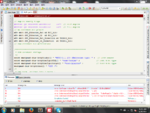Johnny_Churne
Newbie level 6

Hello all friends I am new to Enc28j60, is it possible to use PIC16F887 with Enc28j60? I tried the library that provide by Mikroc but it couldn't compile and don't understand the code .please help!





